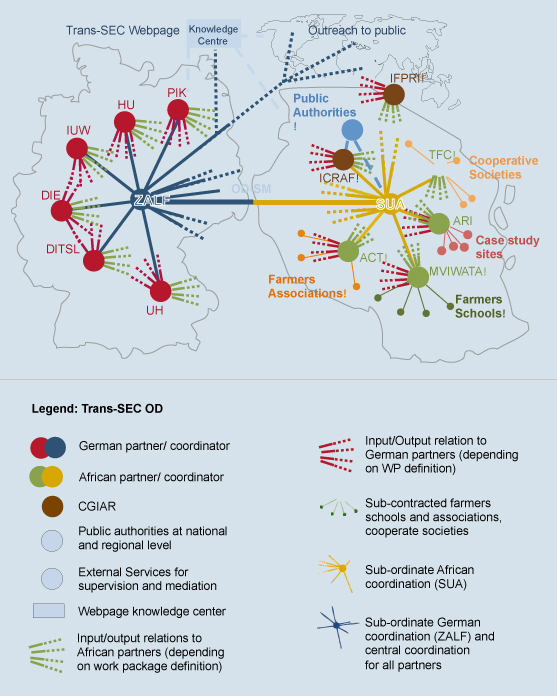Organisation
Trans-SEC used a system of intra- and inter-organisational development among hierarchies, regions and all stakeholders. It aimed to combine input/output flows amongst partners by a) a central coordination (ZALF) and b) a Tanzanian sub-coordination (SUA) for operational management and synthesis. Standard information on administrative and risk management tasks were managed using a "knowledge centre" on the internal webpage area. ZALF and SUA each coordinated their national partner cluster. SUA, ARI, ACT and TFC involved stakeholders at regional and national level of public authorities and ministries. The MVIWATA also involved local stakeholders and disseminated Trans-SEC results to farmer associations and schools as well as cooperative societies. The WP leaders were responsible for in-time delivery of results. The two CGIAR centres operated on specific research tasks and supported the tasks with their excellent infrastructure. Progress and process control through supervision ensured continuous improvement and maximised effectiveness and communication. Annual meetings and reporting to PTJ/BMBF/BMZ ensured transparency and traceability of the project progress.
A Project Steering Committee (PSC) with the leaders of all WPs ensured representation, in-depth scientific knowledge and management of the whole project. The PSC was the leading group and the decision-making body of the project. It worked closely with the ZALF coordinators on all strategic decisions regarding the work.




